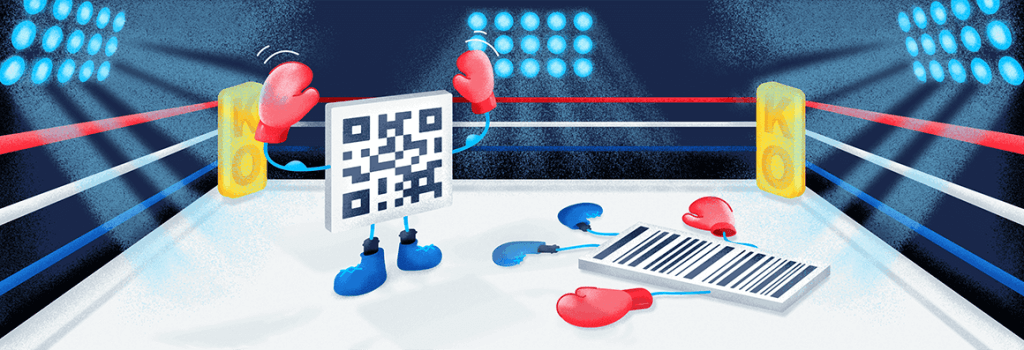
Remember those hazy “before times” of late 2019 and early 2020, when the QR Code was just this strange techy barcode image you saw here and there but didn’t actually know what it was and barely anyone used them. A QR Code seemed passé—almost like putting “e” or “I” at the beginning of a new device’s name and considering it techy and hip, but nobody really took it seriously.
Then along came a deadly global pandemic, when no one wanted to touch a restaurant menu and “contactless ordering” became a thing, and the QR Code had its revenge—even starring in one of the hottest Super Bowl ads of 2022.
But the QR Code wasn’t originally designed for ordering pizza and burgers to your table. The first QR Codes were actually developed in Japan in the early 1990s by Denso Wave, a Toyota subsidiary, to expedite automobile manufacturing. In 1992, engineer Masahiro Hara was tasked with inventing a new bar code that could hold more data. the current barcode that could hold only 20 characters wasn’t adequate for use in managing Toyota’s massive parts inventory. Workers were found themselves scanning up to 1,000 codes a day as they made do by placing multiple bar codes on a single part.
Hara needed a compact code that could hold more data and be scanned quickly. Inspiration struck during a lunchtime game of the strategy game Go. Looking at the game board, he realized how much data its grid pattern could contain—and that by adding a position detection pattern, such a code could always be scanned accurately.
How QR codes work
Three corners of the QR Code contain the finder pattern, a nested series of black and white squares that, when detected by an optical scanner and interpreted by software, allow the scanning device to determine the orientation of the QR Code. Two other patterns are also present. The alignment pattern, smaller squares containing yet smaller squares, is used in all but the smallest codes to determine if the QR Code has been distorted, and the timing pattern, a row and column of alternating black and white squares connecting the large squares of the finder pattern, serves as the coordinate system of the QR Code.
The largest possible code, Version 40, allowed under the QR Code standard is a matrix of 177 × 177 pixels, and the smallest, Version 1, is 21 × 21 pixels. A Version 40 QR Code can contain 7,089 numeric characters or 4,296 alphanumeric characters. (For comparison, this article contains 2,006 alphanumeric characters.) Denso Wave also created a smaller version of the QR Code for use in tracking small objects. Called Micro QR Code, it comes in four versions ranging in size from 11 × 11 to 17 × 17 pixels.
As the COVID-19 pandemic evolves, the future for QR Code use is anybody’s guess—but because we’ve all discovered its conveniences with ordering food and smartphones are so ubiquitous, it’s hard to imagine they will fade away. Plus, QR Codes are now part of the cybercriminal’s arsenal, with the FBI issuing a warning about malicious code use in January.
If you want to know more about QR codes and how they are used, checkout this page on wikipedia.







